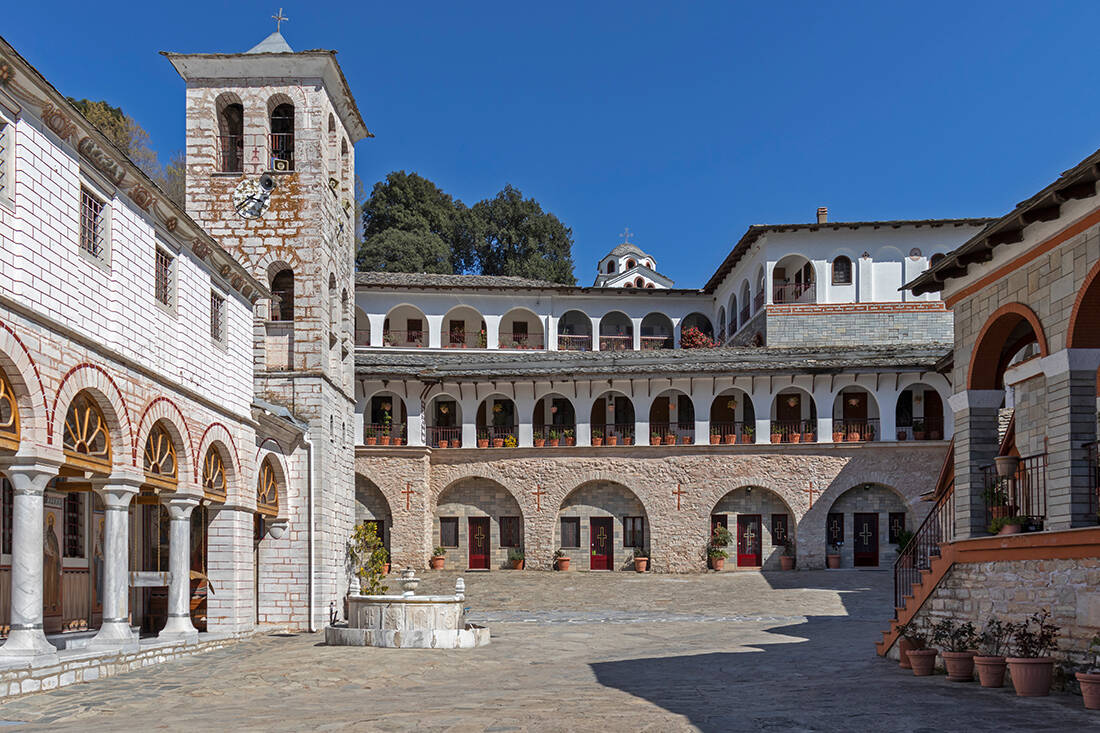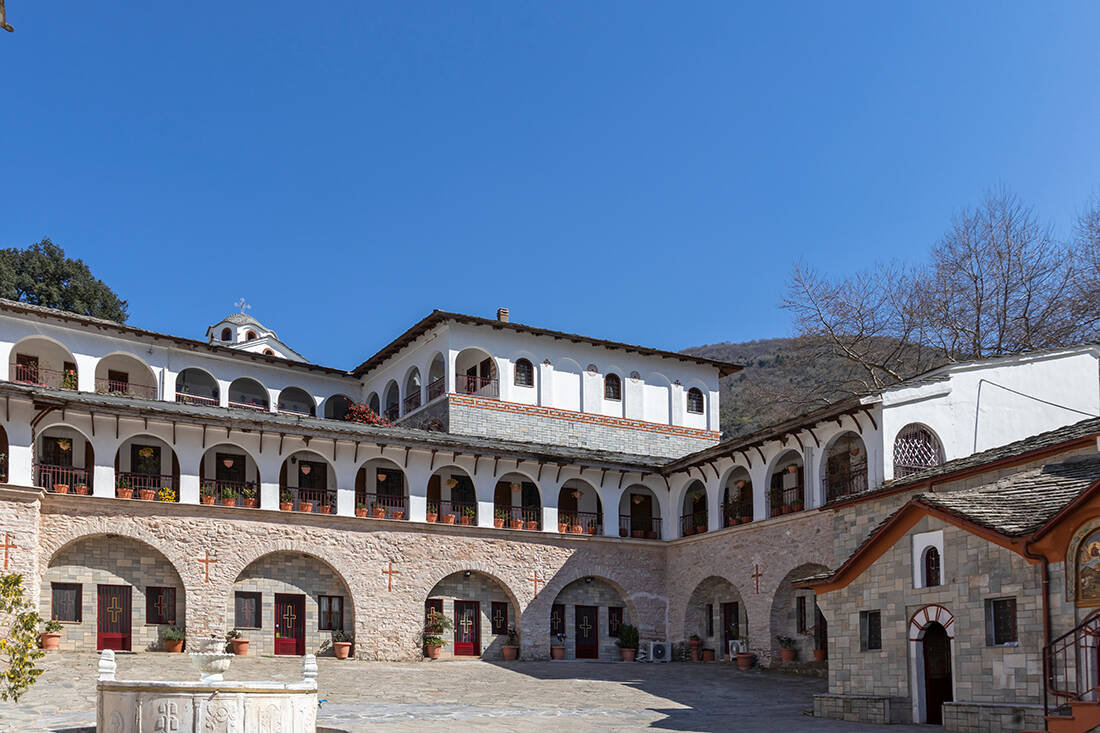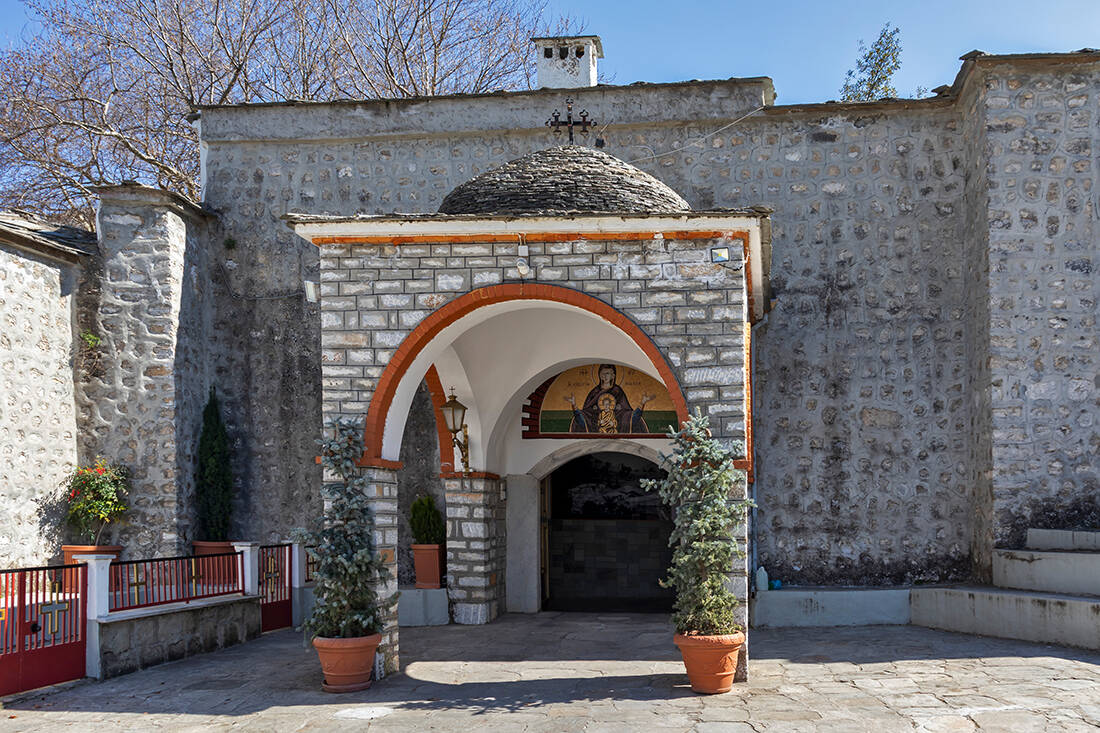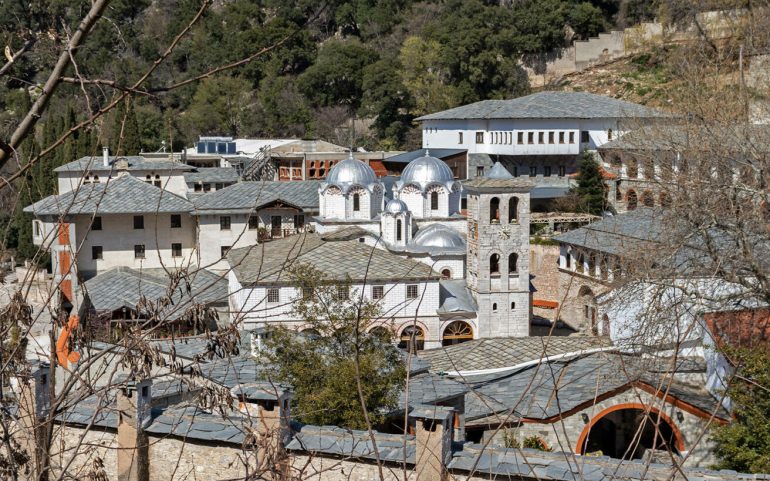There are many in Greece monasteries, some in action and some not, carrying their own story. Many of these monasteries are not only known in Greece, since their fame has crossed the borders of the country and pilgrims from all over the world come to them every year. Typical examples, the Mount Athos and Meteora.
However, there is one that may not be known to many, but it has its own first: it is the oldest operating monastery in Europe. The reason for Panagia Eikosifoinissa, which is located on the borders of the prefectures of Serres - Kavala. However, apart from this first, he also carries his own martyrdom story, which over the centuries was "sealed" with tragic events, sad moments, but also miracles that remind of the power of faith.
The monastery It is built on the north side of Mount Paggaio, at an altitude of 750 meters and those who have visited, speak of the ultimate sanctuary. A place where your soul calms down and because of the location you feel that you are coming closer than ever with God. Perhaps it is the miracles that have been done in its long history that make the pilgrim feel this power of faith. In fact, the first miracle that took place is related to his name.

It is said, therefore, that Saint Germanus, who practiced in the Holy Monastery of Prodromos on the Jordan River, left Palestine and came to the place of Vigla of Paggaios in 518 AD, after a vision he saw coming from the Virgin Mary. After completing the first small church, he looked in the forest for a piece of wood with which he would make the image of the Virgin Mary, as a sign of gratitude.
And indeed he found the right wood. As soon as he started to process it, the wood cracked and the Saint was sorry and told him to leave it. Then a "palm tree" - that is, a brilliant reddish light - bathed the torn wood and through it the Virgin Mary appeared together with Christ. Then, a voice was heard saying to him: "My child hoped, I am here" and at the same time the figure of the Virgin Mary was impressed on the wood. Thus, from the light and the word image, the monastery was named Eikosifoinissa.
After Saint Germanus, the second possessor was considered Saint Dionysios I, who, having resigned from his position as Ecumenical Patriarch, in 1472, arrived in Monastery, contributing the most to the construction of new buildings, but also to the maintenance of old ones. During this period, Panagia Eikosifoinissa experienced great prosperity and her fame became more and more great in the ecclesiastical and monastic circles.
In fact, the monks who lived in it contributed the most throughout the Turkish occupation, so that the population of the surrounding area maintained Greekness and the Orthodox faith. However, they were to pay for their action with their own blood, in a "black" day for the history of the monastery.

On August 25, 1507, the Turks, annoyed by their actions, committed atrocities, slaughtering 172 monks. A few years later, monks of the Vatopedi Monastery of Mount Athos, rushed to the monastery to help rebuild it.
However, its activity did not stop during the Turkish occupation, as it was considered a center of letters and culture.
But the sufferings and trials did not stop.
An earthquake in 1829 caused incalculable damage. In 1854 he suffered a holocaust, and a decade later due to the plague epidemic, many monks lost their lives.
During the Bulgarian occupation, the Bulgarian army assassinated the abbot of the monastery, Elder Makarios. In the same year, the Bulgarian army entered Panagia Eikosifoinissa and tortured the monks, while holding them hostage. Because of the martyrdom they had suffered, but also the miserable living conditions, they ended up in death.

In fact, the Bulgarian army stole relics of incalculable value from the Monastery, which are still kept in the National Historical Museum of Sofia.
Years later, during World War II, and specifically on July 12, 1943, the Bulgarians re-entered the Monastery, which they set on fire. All the buildings were completely destroyed and the Monastery of Panagia Eikosifoinissa was almost deserted.
In 1965, its reconstruction began and was completed a few years later, on the initiative of the Metropolitan of Drama, Dionysios Kyratsos.

Today, Panagia Eikosifoinissa is a nunnery. It is a popular religious destination, as hundreds of believers come to it to worship, but also to get to know the Martyr Monastery with its great history that is lost in the depths of the centuries.
The monastery celebrates on August 15, the Assumption of the Virgin, on September 14, the Holy Cross, but also on November 21, the Entry of the Virgin.
